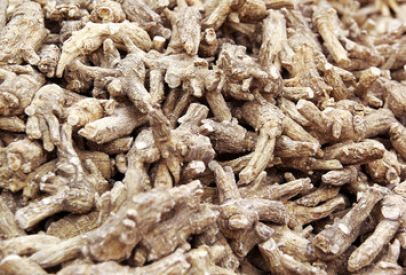How to choose “American Ginseng”?

The ginseng plant is well known among proponent of natural medicines and herbal remedies. The root of this miraculous plant is known to be rich in ginsenosides, a compound that provides multiple benefits to human health and vitality. The use of ginseng dates back to ancient traditional Chinese medicine and has a large number of takers even today, especially those who like to stay healthy the natural way. There are many different varieties of ginseng available in the market, a common one being the American ginseng. Bearing the scientific name Panax quinquefolius, this root is known for its adaptogen properties and cooling effects on the body. When selecting ginseng root of this kind, a few things need to be made note of. Important ones are discussed below.
• The size, shape, and age
The root of the American ginseng plant is usually available dry, and is cylindrical or spindle shaped. It is generally between 2 and 6 centimeters in length. Many of them are also conical shaped. In general, the roots have between 0.5 cm and 1 cm thick bodies. Their surface of also have fine stripes and irregular longitudinal wrinkles, along with dense and fine ring-shaped lines on the top. Most American ginseng plants roots are grown for at least 3 to 4, or even 5 years before they are harvested. The age of the ginseng can be determined by counting the scars on its leaves. The more the number of lef scars, the older the root, and the more portent it is.
• The growth types
American ginseng available in the market maybe one that is obtained from the wild, or those that are cultivated. Some varieties may even be grown artificially in the woods – a category known as wild stimulated or woods grown. Wild American ginseng generally has longer branches, and is whiter and lighter in colour. It has a stronger smell and tastes slightly sweet with a bitter feeling. Cultivated American ginseng has a thick body resembling a thumb and is generally smaller. It looks yellow and often has black stripes with a dense outside and faint yellow colour inside. It also has a very strong flavor.
• The growth locations
The American variety of ginseng available in the market also consists of two varieties of the roots, one which is imported, and the other that is grown within the country. Due to the difference in the climate and soil conditions in which they grow, these two varieties of American ginseng differ slightly in their characteristics. Imported ginseng roots have horizontal rings with greyish black colour on the outside, and a yellowish white inside. Domestic ones have scared rings. Imported American ginseng has a thin flat section, while the domestic one has as a hard, cross section that is rarely flat. Another distinction between the two is that imported ginseng smells sweet, whereas wild, homegrown varieties have a lighter aroma.
• Prices
American ginseng, be it wild or cultivated, imported or homegrown, is available at a wide range of prices per pound. The price tag is usually reflective of the age of the plant, and how and where it is grown. In general, the older the plant the higher its potency and its price. Also, wild varieties generally command a higher price than cultivated ones of the same quantity. This is because the older, wild ginseng is believed to absorb more nutrients from the forest floor, and have more healing powers derived from its natural habitat.
American ginseng can be bought in fresh or dried form. When selecting the former, roots that are plump, firm, and light colored without crushed or broken appearance. Fresh roots can be kept locked in a plastic bag in the vegetable compartment of the refrigerator for up to 10 days. Dried and powder varieties last longer.
